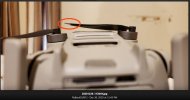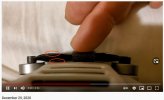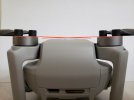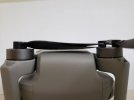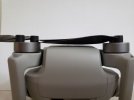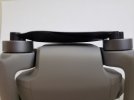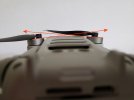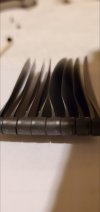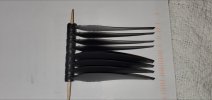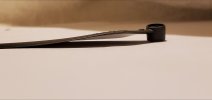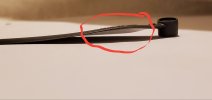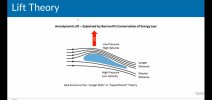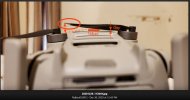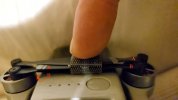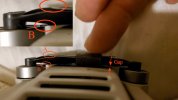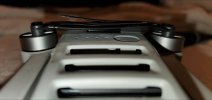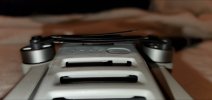I have the same error for some time. I replaced the Left Rear blade twice but still i get the error.
After reading this forum, I flight the MM for about 15 minutes in my room to test it. There was no error.
I looked at the aircraft dat file (using DatCon) and figure out that indeed this rotor speed is higher (about 25% from the other)
Motor:Speed:RFront 9949.0
Motor:Speed:LFront 9375.0
Motor:Speed:LBack 12521.0
Motor:Speed:RBack 10684.0
It looks like there is a problem with this rotor - what can i do ?
Your numbers are irrefutable evidence of a problem.
If the props are all in equally good shape, then the motors should all be turning at the
same speed while in a hover. If your left-back motor is turning faster than the others, it's a clear sign that those blades are less efficient at producing lift, requiring that motor to spin faster to generate the required amount of lift.
Those left-rear blades need to be replaced with fresh straight blades.
If you've already replaced them twice before and are still getting the same error, then you need to examine how you are storing the blades between flights.
I've posted this image before, but I've added one new upward pointing red arrow. This is looking at the Mini placed upside-down onto its back. These are the rear motors and rear propeller blades. The blades labelled 1&2 are mounted on the left-rear motor.
This photo was taken with brand
new blades installed on both rear motors of my Mini. You can see how high the tips of the new blades stand. Obviously, if you turn the Mini over and rest it onto a flat surface, the weight of the Mini will first fall onto the tips of these blades. Also obviously, in order to laterally mesh the blades over/under each other (as recommended by DJI), the blade tips from one side have to be forced down to fit folded under the opposite side's blades. (See blade tip#2)
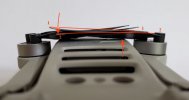
Less obvious is the fact that this doesn't just bend the blade.
It also twists the blade. Note the upward pointing red arrow. Here the trailing edge of the prop blade contacts the body of the Mini. As the tip of the blade is forced to bend down, the trailing edge is supported by the body of the Mini.
Where the trailing edge is touching, near the root of the blade, is much stronger than the tip of the blade. The root of the blade is thus better at resisting the deformation. However, the tip is not only being bent down, it is
twisting.
This twist reduces the pitch angle of the blade, flattening the angle of attack of the blade. So while the blade root might still be producing lift, the faster moving tip end of the blade might just be slicing through the air producing no lift at all. In really severe cases of blade deformation, the blade tip may actually have a negative angle of attack at their tip producing downward thrust rather than upward lift.
This is a photo of the front blades viewed end-on. The front blades are less of an issue, as I showed in earlier photos, because when folded their motors are level with each other. I only used them for this photo as it's easier to get the camera under the blades to show this angle. But here you can see that applying an upward force at the trailing edge, while pushing down on the blade tip, causes a torsion in the blade that flattens the pitch angle.
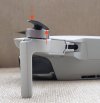
Storing the blades (especially the rear motor blades) folded together crossed laterally under the body of the Mini is what's causing the blades to bend. Resting the weight of the Mini onto the tips of the blades obviously will make the situation worse. But merely forcing the blades to mesh together, with their tips bent under each other, is enough to deform the blades.






